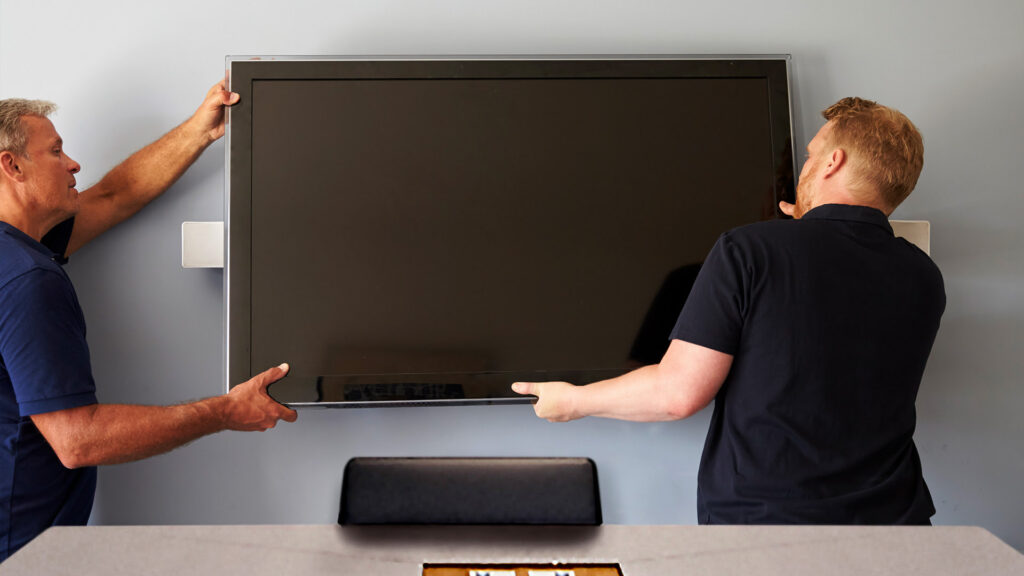What Is Interoperability & Why Is It Essential for Effective Hybrid Workplaces?
Summary
- Interoperability is essential for hybrid workplaces, enabling optimal connections between communication platforms with bi-directional seamless data flows. This makes both remote and in-office work more efficient by reducing compatibility issues.
- Interoperability allows for consistent user experience, streamlined workflows, and shared resources, enhancing your organization’s collaboration and efficiency.
- A lack of interoperability can lead to communication silos, increased errors, and decreased employee morale due to inefficient systems.
- ET Group designs custom unified communications & collaboration workflows that use interoperability as a core guiding principle. Contact our team to learn more about creating an interoperable space for your organization.
Hybrid workplaces are quickly becoming the new normal for forward-thinking organizations—blending the flexibility of remote work with the stability of traditional office settings. But every effective hybrid workplace depends on a concept that’s crucial for efficiency and inclusivity: interoperability.
Interoperability is the governing principle we use at ET Group to integrate meeting room technology, desk-hoteling software, and more in our unified communications & collaboration services. Below, we explain everything you need to know about this concept when updating your workplace for the modern era.
What Is Interoperability (& Why Does It Matter)?
Interoperability is the ability of different communication platforms to connect seamlessly with one another. In layman’s terms, it’s about ensuring data can flow directly between the technologies that connect your workplace.
The simplest way to think about interoperability is that it gives everyone the same experience, no matter what device they’re using. But interoperability is different from integration—which is a general way of ensuring that disparate technologies can all be used together in the same IT environment. For two communications platforms to achieve interoperability, they should be set up to exchange data directly and without the need for additional infrastructure.
Hybrid Technology Where Interoperability Is Imperative
Efficient, user-friendly hybrid workplaces require various technologies to keep in-person and remote team members seamlessly connected. Among these, video conferencing platforms are the single most important technology for ensuring interoperability, since team members often use different software (Zoom, Google Meet, etc.) to communicate in hybrid setups and must be able to connect them without technical challenges that hamper user experience.
Other technologies should also be integrated into hybrid workplaces to create a harmonious tech experience for users. These include:
- Project management software
- Cloud storage services
- Video conferencing platforms
- Virtual collaboration tools
- Desk-hoteling programs
The Perils of Poor Interoperability
Interoperability issues can cripple the efficiency of hybrid workplaces, turning what should be a streamlined operation into a clunky and disjointed process. Here are a few of the challenges that can occur:
- Fragmented Communication:
-
-
- Information gets trapped in silos, leading to misinformed decisions.
- Team members are often out of sync, missing critical updates.
-
- Inefficient Workflows:
-
-
- Tasks that should be automated remain manual, increasing workload.
- Employees waste time navigating incompatible systems.
-
- Increased Error Rates:
-
-
- Manual data transfer between platforms is prone to human error.
- Inconsistencies in data can result in costly mistakes.
-
- Frustration and Disengagement:
-
-
- Constant technical issues demotivate and frustrate employees.
- Productivity declines as morale suffers due to inefficient systems.
-
- Loss of Productive Time:
-
- Delays in information flow slow down project timelines.
- Collaboration suffers as teams cannot work in real time.
The Collaborative Power of Interoperability
Conversely, when systems are interoperable, they empower all members of your hybrid workplace to collaborate easily. Here’s what interoperability brings to the table:
- Seamless Communication:
-
-
- Real-time updates across platforms keep everyone informed.
- Cross-platform alerts and notifications ensure that no task is overlooked.
-
- Streamlined Work Processes:
-
-
- Automated workflows replace manual data entry and transfer.
- Centralized access to tools and data saves time and reduces effort.
-
- Enhanced Team Collaboration:
-
-
- Teams can work simultaneously on projects using their preferred tools.
- Remote and in-office employees have equal participation in all processes.
-
- Data-Driven Decision Making:
-
-
- Unified data analytics provide insights for better business decisions.
- Customer feedback is directly linked to development processes for agility.
-
- Innovation and Creativity:
-
- Integrated tools allow for the free flow of ideas and innovation.
- Teams can leverage diverse technologies to enhance their output.
Fostering Inclusion Through Interoperable Systems
Focusing on interoperability when creating hybrid spaces is what makes it possible to create a cohesive environment out of potential chaos. For example, each hybrid setup we implement at ET Group is unique, but we always set out to achieve the following goals:
- That all employees have equal access to the same tools and resources, irrespective of whether they are in the office or working remotely.
- That every voice can be heard and every contribution valued.
- That user experience remains consistent and productive throughout the organization.
- That every space is human-centric—that the technology is there to serve the people instead of the other way around.
By prioritizing interoperability when we design digital work environments, we ensure that your digital tools and platforms enhance your productivity and the experience of your team rather than holding them back. Reach out to us and learn more about creating a hybrid environment that propels your business forward, and check the FAQ below to learn more about the solutions we use.
FAQ about Interoperability in Hybrid Workplaces
Will choosing interoperable systems limit my choice of workplace technologies?
Not likely. Interoperability is less about finding products that are designed to work with each other out of the box, and more about creating processes that make different technologies compatible. In the long-run, this usually broadens your technology options instead of limiting them.
How much maintenance is required to maintain interoperability in a hybrid workplace?
Every IT environment requires ongoing technical support to prevent technical errors, security gaps, and obsolescence. That’s why ET Group offers support services for hybrid environments that ensure the ongoing functionality of our solutions.
Can I make different video conferencing platforms (like Zoom and Teams) interoperable?
Yes—our connections solutions can help you architect a space capable of connecting to major meeting platforms like Google Meet, Zoom, Teams, Webex, and more.
Stay connected with us:
Follow ET Group on LinkedIn
Subscribe to ET Group’s YouTube Channel









